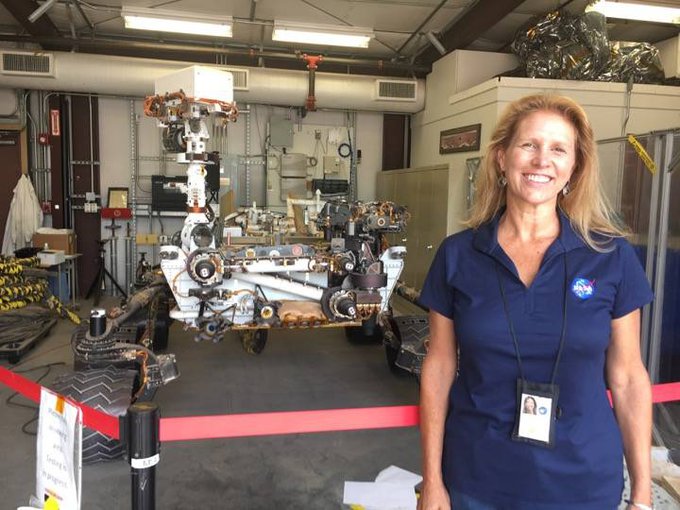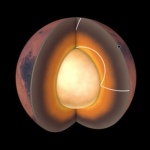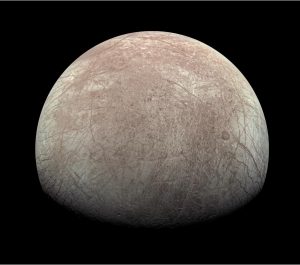
Ready to design a space mission? NASA’s Lori Glaze offers advice for future explorers
Do you have an idea hotter than Venus for a space mission?
In our previous post, Dr Lori Glaze, Director of the Planetary Science Division at NASA, discussed the selection of two new missions to Venus by NASA. But what are a few of the criteria in the selection process that allows a concept to blossom from paper pad to launch pad?
Glaze explains that each proposed mission in NASA’s Planetary Science Division is examined by several teams who consider a myriad of factors.
“We obviously have to ensure that the mission is technologically feasible, scientifically compelling, and would work within the available budget,” Glaze begins. “But then there are less-tangible reasons for selecting one mission or another—things we often refer to as ‘programmatic factors’. Such considerations might include the overall balance of our current/future mission portfolio, NASA’s overall strategy and priorities, and lots more.”
NASA Planetary Science Division Director, Lori Glaze, introduces the latest status of Mars exploration and the forefront of planetary exploration promoted by NASA.
For the designer of a new space mission at NASA, one of the first considerations is the mission class. The NASA Planetary Science Division has four different classes for space missions; SIMPLEx (Small Innovative Missions for Planetary Exploration) for small spacecraft weighing less than 180 kg, Discovery, New Frontiers and Flagship. The two new Venus missions, DAVINCI and VERITAS, will be Discovery-class missions.
One obvious difference between the classes for missions is cost and cadence. Discovery missions have a smaller budget than the category above, New Frontiers, but the missions are also launched more frequently, giving a larger number of opportunities to present your idea.
If your mission plan cannot compressed into a Discovery-level budget, then you might want to try for the resources available in a higher category. However, while mission proposals for the Discovery class can explore any aspect of Solar System science, a mission concept for the top classes must align with NASA’s overall plan for space exploration.

The largest Flagship class missions are not open to proposed ideas, but rather the mission is selected based on priorities identified in the decadal surveys written by the scientific community. This is a similar approach adopted for the largest class of space missions led by the European Space Agency. However, individual teams will likely have the opportunity to propose science instruments or technology demonstrations that could be included as part of the NASA Flagship mission plan.
Both New Frontiers and Discovery missions are selected based on a competition between mission proposals submitted by different teams. However, New Frontiers candidate mission must choose from a limited set of destinations that have pre-defined goals, which were selected along with the Flagship missions.
“For missions that could work within either the Discovery or New Frontiers programs, I’d say the major considerations are cost and cadence,” says Glaze. “Science missions are driven by science questions, so if you can design a mission to meet your science requirements with a smaller budget then that’s great and Discovery is probably a good idea.”

Creating a mission proposal is a huge amount of work and it is sad inevitability that only a small number of the concepts proposed will ultimately fly, leaving amazing science on the cutting room floor. For researchers who have invested that time effort, it can be an unforgiving process.
“Working in planetary science and exploration is definitely not for the faint of heart!” Glaze admits. “Things we work on for years or decades can be over in a moment—like when a mission proposal is unsuccessful or an operating mission fails/ends.”
Glaze says that the strategy for staying positive depends on each individual researcher. But for herself, it is the big picture of exploration and the excitement of exploring it together that continuously fuels her enthusiasms.
“Personally, I find that being able to celebrate other people’s achievements and success is key,” Glaze says. “Even if you’re not intimately involved in a specific project, the endeavour of exploring our Solar System is a community-wide process. No one person can do it alone. As researchers we are all driven by our individual curiosities and goals, but when I take a step back to remember why I originally wanted to work in this field, it wasn’t about a specific science question about a specific place on a specific body, it was about looking up at the sky and wondering what is out there, and how human ingenuity could take us there.”

Glaze began her career with a doctorate in environmental science. Her wonderings about what was beyond our planet let her to research focussed on Mars, Venus, the Moon, and Io, as well as our own planet Earth. Later, Glaze would move into the leadership side of science and research, becoming chief of the Planetary Geology, Geophysics and Geochemistry Laboratory at NASA’s Goddard Space Flight Center and Deputy Director of Goddard’s Solar System Exploration Division. She been the Director of the Planetary Science Division at NASA since 2018.
“As my career has progressed, I’ve gravitated to the leadership side of science and research,” Glaze notes. “And the variety of roles I’ve had through the years have definitely prepared me well for the large scope of my current position.”
But was there any skill that is incredibly useful now but would have been surprising to the Glaze as a young scientist?
“Yes—learn how to effectively communicate your science!” says Glaze. “When I was a college student I was only interested in math and science. I thought I would be happy just solving math and physics problems for my entire career. When I began working as a practicing scientist, however, I began to realise how critically important both written and oral communication skills are. “

Glaze explains how the need to communicate permeates all areas of the scientific process, starting with tackling the research itself.
“To be a successful scientist you need to write compelling proposals to secure funding to support your research,” Glaze described. “And then, once the research is complete, it doesn’t really count for much unless you can convince your peers through reviewed publications and oral presentations that the research was rigorous and the results are moving science forward.”
Then for your research to make a difference to the field and world around you, its importance needs to be transmitted beyond your scientific colleagues.
“It’s also really important to be able to communicate your science effectively to people other than your scientific peers—whether that’s getting kids, the general public, or policy-makers excited about science and its importance in society,” Glaze explains. “I’ve come to realise that the math and physics part of being a scientist is really only a small fraction of the job! Over my career, I have spent far more time reading and writing than I ever did solving physics problems.”
Further information:
The story of Venus: NASA’s Lori Glaze talks about the selection of two new NASA missions to Venus
NASA Planetary Missions
How the sample from the Martian moon, Phobos, will complement samples collected by the NASA/ESA Mars Sample Return to discover if the red planet once held life.
 Previous Post
Previous Post Next Post
Next Post






